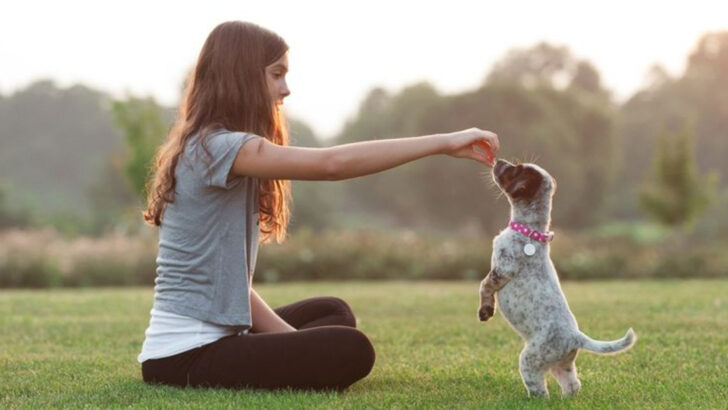Your puppy is not just a bundle of joy – they’re a sponge, soaking up every lesson you teach. And if you think that adorable little face can’t learn much, think again! The first two years of a puppy’s life are crucial, and what you teach them now will set the stage for the rest of their lives.
From basic obedience to important life skills, these formative years are packed with opportunities. Trust us, you’ll want to start strong.
Get ready to dive into the essential lessons that will turn your playful pup into a well-behaved dog. Because the right training doesn’t just shape a dog – it shapes your life together.
Let’s make sure that when your puppy turns two, they’ll not only be your best friend but the smartest companion you could ask for.
Socialization Skills
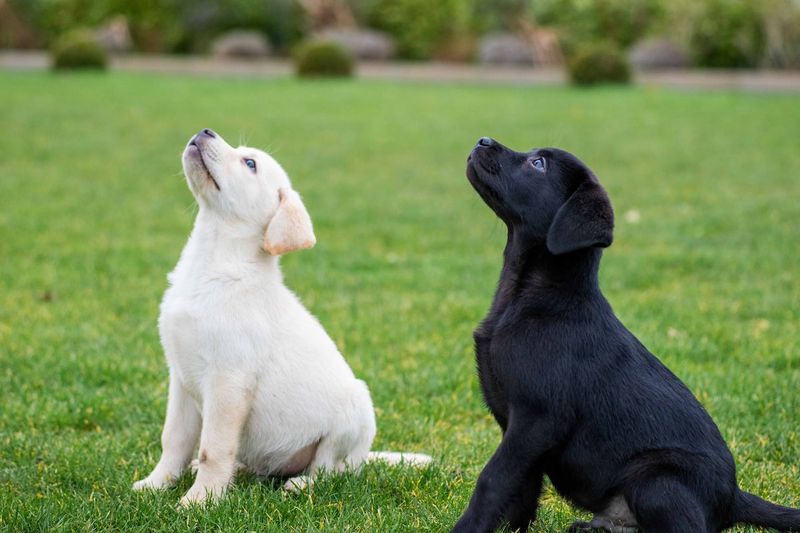
Socialization is paramount for a puppy’s healthy development. Introduce your puppy to diverse environments, people, and other pets. Start with familiar settings and gradually introduce new experiences. This builds confidence and reduces anxiety in unfamiliar situations.
Encourage positive interactions by rewarding calm behavior with treats and praise. The key is consistency and patience. By exposing them to various stimuli, you help them adapt to new experiences smoothly. This foundational skill ensures they grow into friendly, well-adjusted adults, making socialization an essential lesson before they turn two.
Basic Obedience Commands
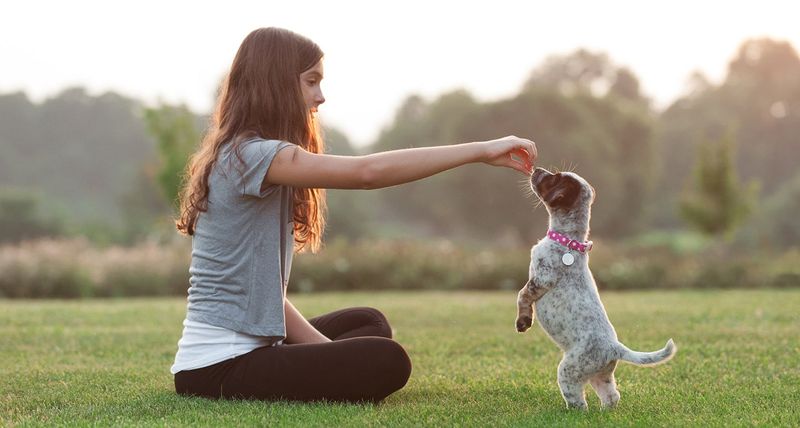
Teaching basic commands like sit, stay, and come is crucial for managing your puppy’s behavior. These commands provide structure and safety, ensuring they respond promptly to your guidance.
Start with short training sessions, using treats and positive reinforcement. Be patient and consistent, gradually increasing the complexity of commands. Each successful response should be met with praise, strengthening the bond and understanding between you and your puppy. By mastering these commands early, you lay the groundwork for more advanced training, making obedience training a vital part of their first two years.
Leash Walking Etiquette
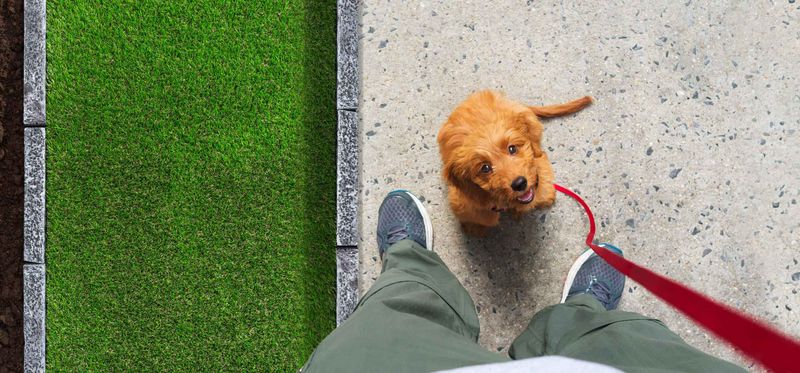
Walking on a leash is an essential skill for every puppy. Begin by introducing the leash indoors, allowing your puppy to become comfortable with it. Gradually transition to short outdoor walks, rewarding calm behavior.
Teach them to walk beside you without pulling or lunging. Consistent practice will help them learn to enjoy walks while staying safe. Use treats and verbal cues to guide them along the path. This lesson not only ensures safety but also enhances your shared outdoor experiences, making leash walking a fundamental skill for their early years.
House Training Basics
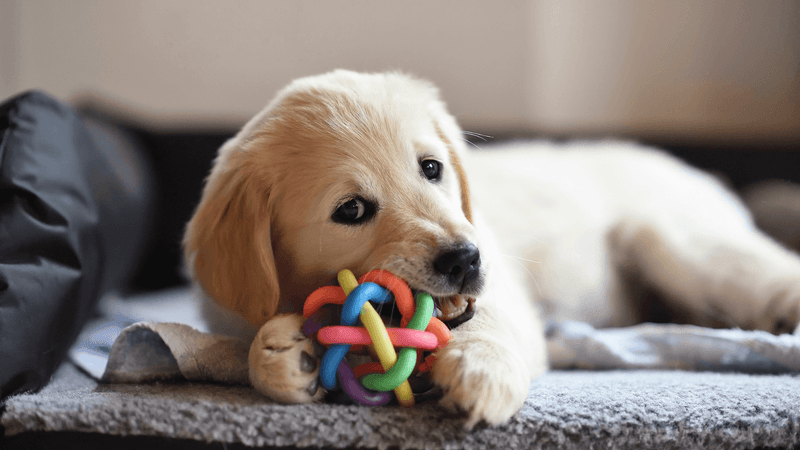
House training is a critical lesson for your puppy’s first years. Establish a consistent routine, taking them outside frequently, especially after meals and naps, to their designated spot.
Use positive reinforcement like treats and praise when they eliminate outdoors, reinforcing good habits. Patience is key, as accidents will happen. Avoid punishment; instead, guide them gently to the right spot. Consistency helps your puppy understand expectations, leading to fewer accidents over time. This skill not only maintains a clean home but also builds trust and understanding between you and your puppy.
Crate Training
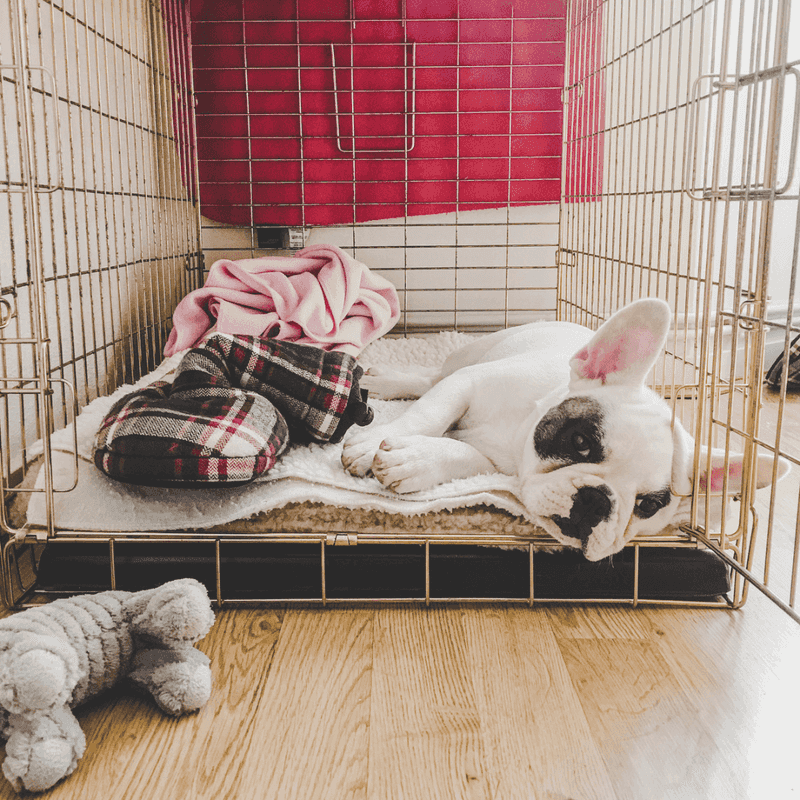
Crate training provides your puppy with a safe, comfortable space of their own. Choose a crate big enough for them to stand, turn, and lie down, making it inviting with soft bedding and toys.
Introduce the crate gradually, encouraging them to explore it at their own pace. Use treats to create positive associations. A crate can be a valuable tool for house training and managing behavior, offering security and routine. Over time, your puppy will view the crate as a den-like sanctuary, making it an indispensable part of their early training.
Handling and Grooming
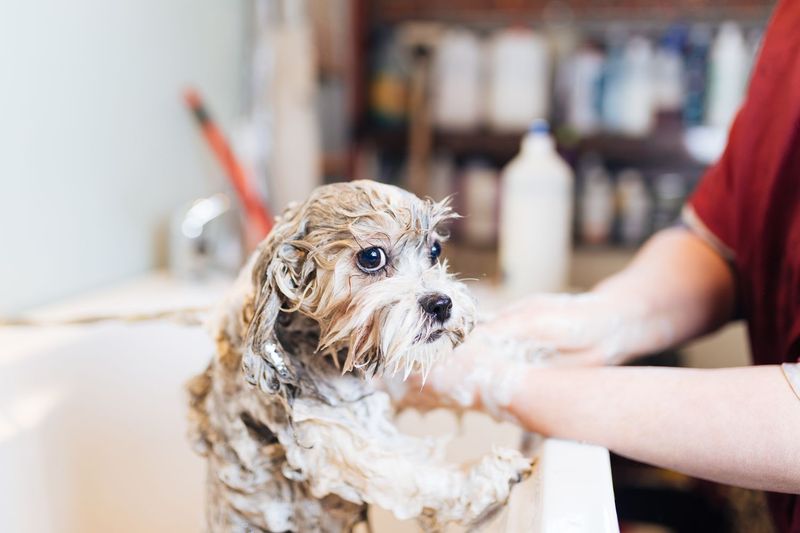
Teaching your puppy to accept handling and grooming is vital for their comfort and health. Begin by gently touching their paws, ears, and mouth, rewarding calm behavior with treats.
Gradually introduce grooming tools, like brushes and nail clippers, to familiarize them with the process. Make grooming sessions short and positive, increasing the duration as they become accustomed. Regular grooming promotes hygiene and allows early detection of health issues. This lesson not only eases future vet visits but also strengthens the bond between you and your puppy, ensuring they’re well-groomed and happy.
Bite Inhibition
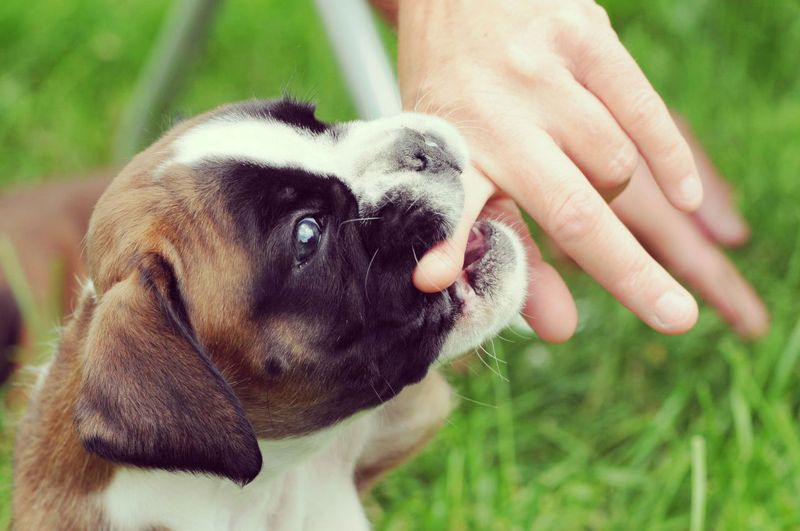
Bite inhibition teaches your puppy to control the force of their bite. During play, if they bite too hard, let out a yelp to indicate it hurt, and withdraw your hand. This mimics how littermates teach each other not to bite too hard.
Consistency is crucial for this lesson. Offer toys for appropriate chewing and discourage biting skin or clothes. Reinforce gentle play with praise or treats. By learning bite inhibition, your puppy becomes safer to interact with, reducing the risk of accidental injury, and building trust and safety in your relationship.
Separation Comfort
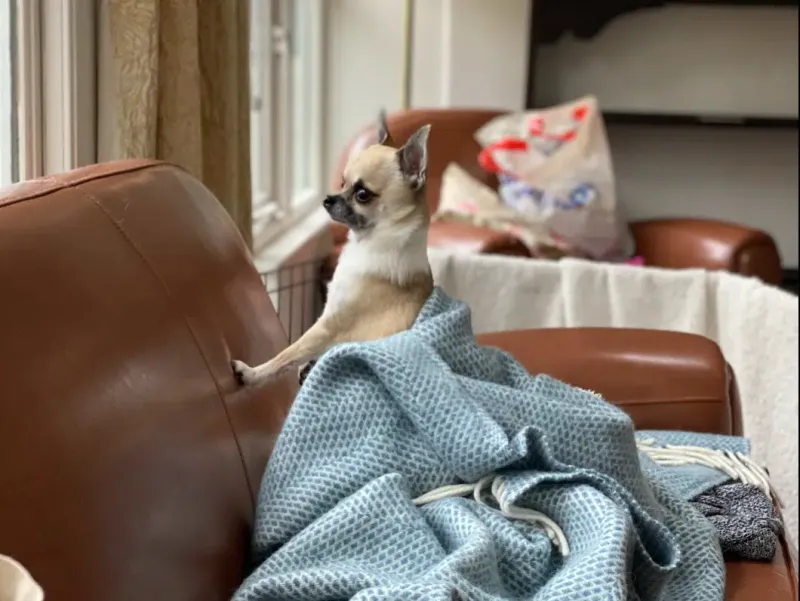
Helping your puppy feel comfortable when alone is crucial to prevent separation anxiety. Start by leaving them alone for short periods, gradually increasing the duration as they adapt.
Create a safe, comforting environment with familiar toys and treats. Avoid dramatic departures or arrivals to minimize anxiety. By teaching them that being alone isn’t scary, you ensure they remain calm and content in your absence. This lesson fosters independence and reduces stress, making it a key aspect of their emotional development and well-being.
Come When Called
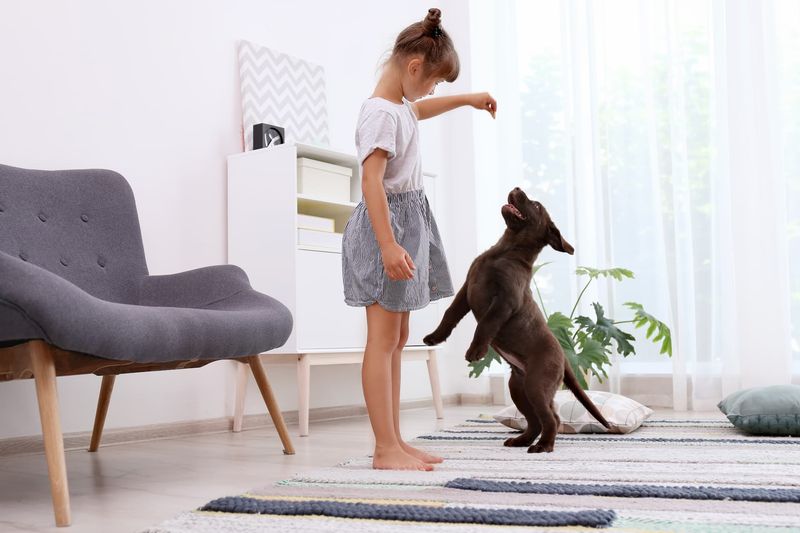
Teaching your puppy to come when called is vital for their safety. Start in a distraction-free area, using a cheerful tone to call them. Reward them with treats and praise for responding promptly.
Gradually increase the difficulty by introducing distractions and varying locations. Consistency and positive reinforcement are crucial for success. This command ensures they return safely to you in potentially dangerous situations, enhancing their safety and your peace of mind. By mastering this, your puppy learns to trust and rely on you, solidifying your bond and communication.
Leave It Command
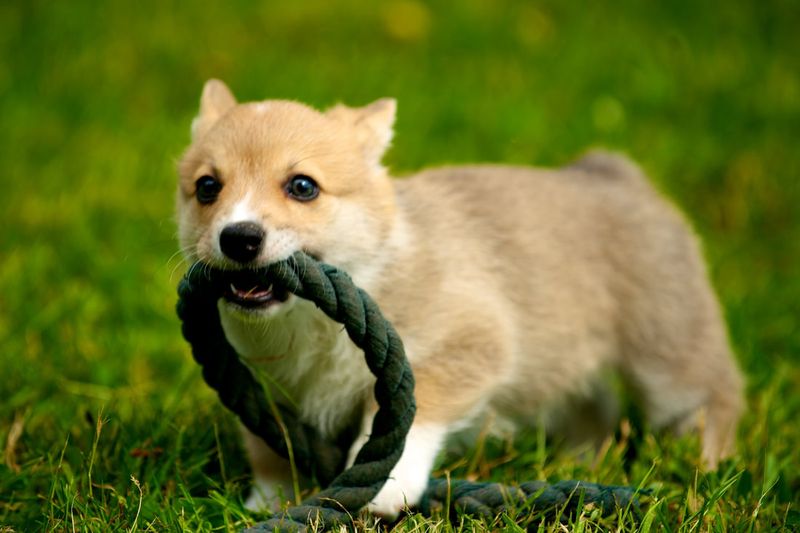
The ‘leave it’ command prevents your puppy from picking up dangerous or unwanted items. Begin training with treats in your hand, closing your fist when they try to grab it.
Use the command and reward them for ignoring the treat. Practice with various objects, gradually increasing difficulty. This skill keeps them safe during walks and at home. By learning to leave things on command, your puppy gains impulse control and trust in your guidance, making it an essential lesson for their early training.
Drop It Command
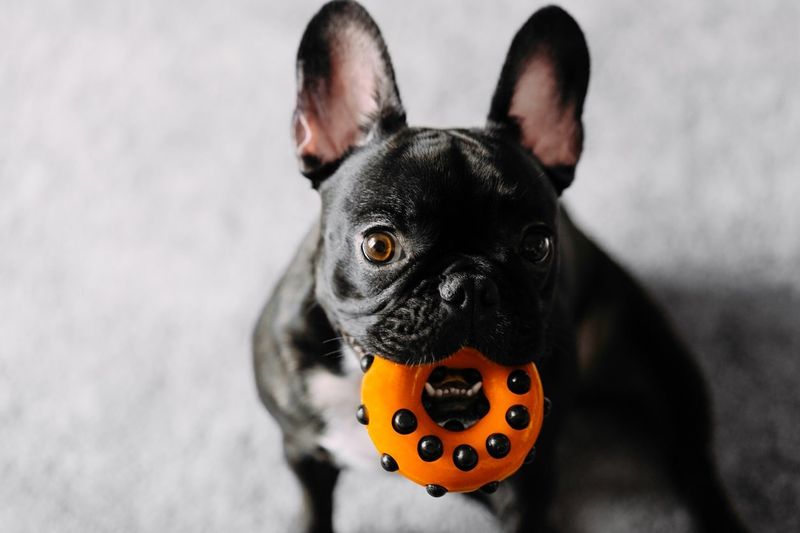
The ‘drop it’ command is essential for preventing your puppy from holding onto inappropriate or dangerous items. Start by offering them a toy, then gently trade it for a treat while saying ‘drop it.’
Practice regularly, using different items, and reward successful drops with praise and treats. Consistency helps them understand and respond quickly. This command ensures they release potentially harmful objects, enhancing safety and obedience. Reinforcing this lesson builds trust and communication, making it a vital part of their early training and relationship with you.
Stay Command
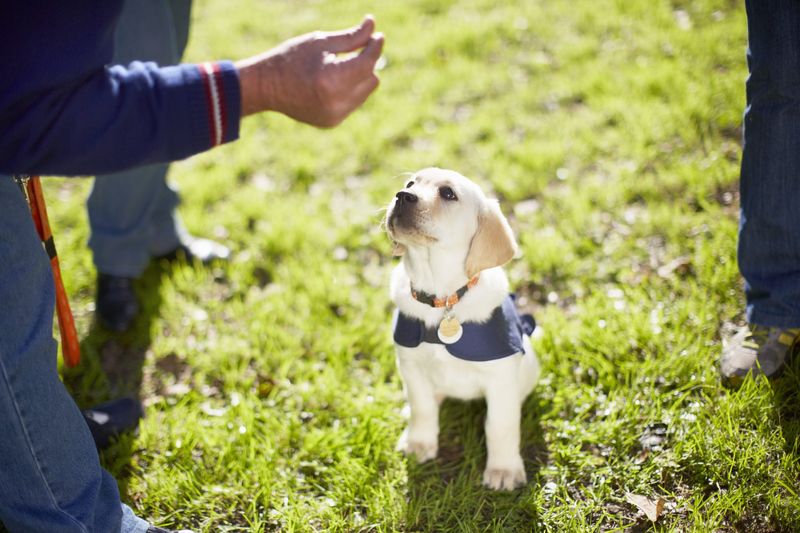
Teaching your puppy to stay is crucial for their safety and discipline. Begin with short durations, using a hand signal and verbal cue. Reward them for remaining still, gradually increasing the duration and distance.
Practice in various settings to build reliability. Consistency and patience are key. This command prevents them from running into danger, ensuring they remain safe in different situations. By mastering the stay command, your puppy learns self-control and trust in your instructions, enhancing their obedience and your peace of mind.
Off Command
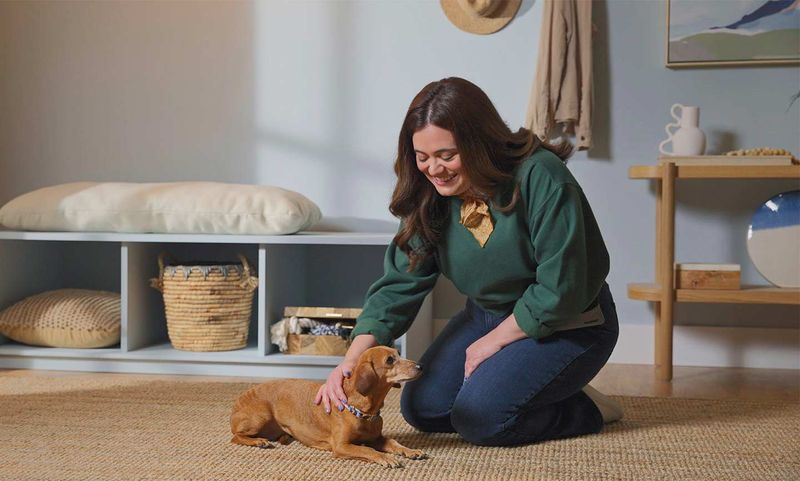
The ‘off’ command teaches your puppy to respect boundaries, such as staying off furniture or people. Use it when they jump up, redirecting them with a treat to the appropriate place.
Consistency is key, ensuring the same rules apply to all family members. Positive reinforcement encourages them to respect boundaries willingly. This lesson fosters good manners and prevents unwanted behaviors, making it essential for harmonious living. By teaching your puppy the ‘off’ command, you establish clear boundaries, enhancing their behavior and your relationship.
Quiet Command
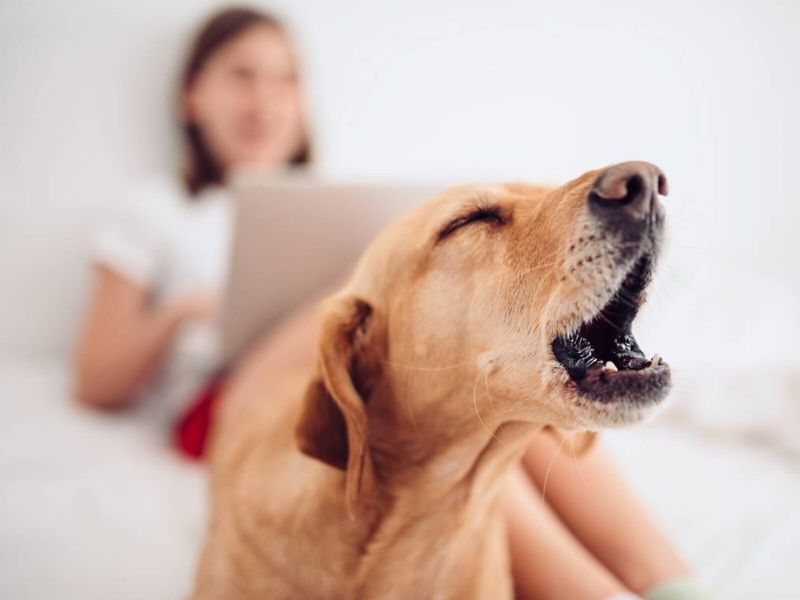
Teaching your puppy the ‘quiet’ command helps manage excessive barking. Start by identifying triggers and using the command when barking begins. Reward them for stopping, reinforcing calm behavior.
Gradually reduce rewards as they learn to respond reliably. Consistency is crucial, ensuring they understand when silence is expected. This command promotes peace in your home and neighborhood, reducing stress for both you and your puppy. By mastering the ‘quiet’ command, they learn to communicate more effectively, enhancing understanding and harmony in your relationship.
No Biting Furniture
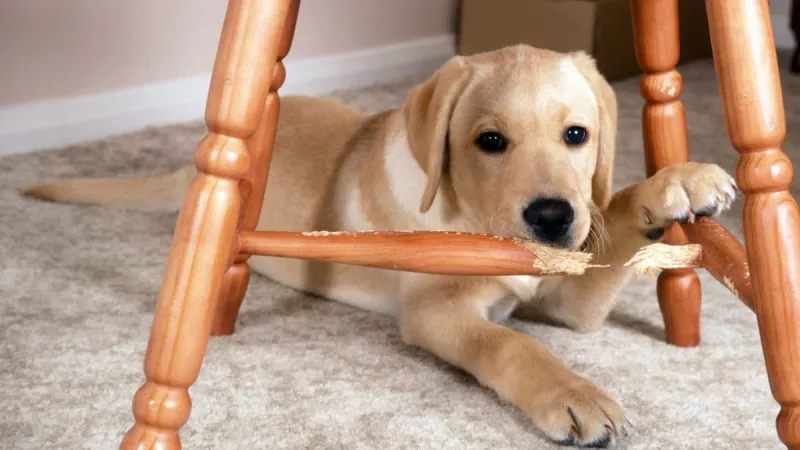
Preventing furniture chewing is crucial for a harmonious home. Provide appropriate chew toys, redirecting them when they start on furniture. Consistency and patience are key.
Encourage positive behavior with praise and treats, ensuring they understand what’s acceptable. Supervision is essential, especially during their teething phase. This lesson not only protects your belongings but also helps them develop good habits. By teaching your puppy not to bite furniture, you ensure a peaceful cohabitation, enhancing both your living environment and your relationship.
Comfort with Car Rides
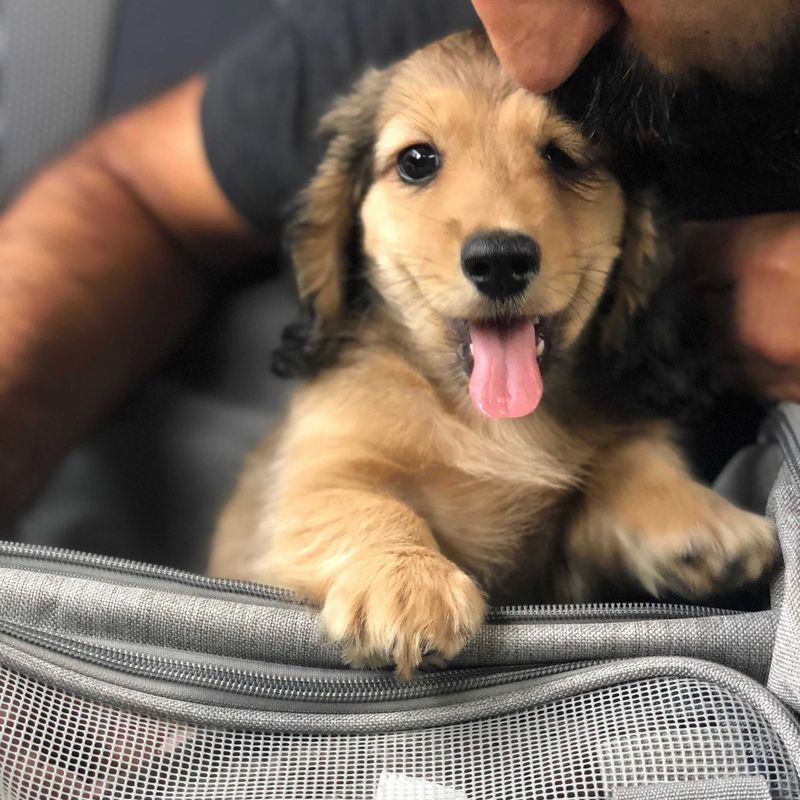
Comfort with car rides is essential for vet visits or travels. Start with short trips, ensuring a secure and comfortable space. Gradually increase duration, rewarding calm behavior with treats.
Use soothing words and a steady tone to reassure them. Consistency helps them associate car rides with positive experiences. This lesson reduces anxiety and ensures safety during travels, making journeys enjoyable for both of you. By teaching your puppy to enjoy car rides, you open opportunities for adventure and bonding, enhancing their world and your companionship.
Polite Greeting Behavior
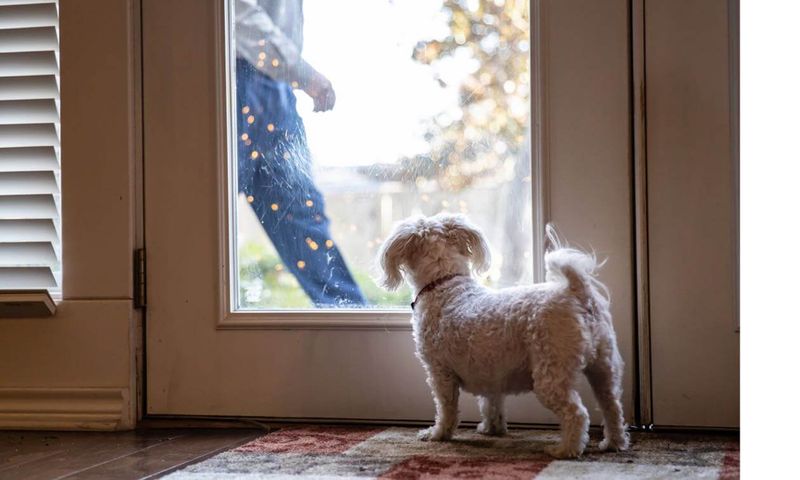
Teaching polite greetings prevents jumping on guests, promoting calm interactions. Use the ‘sit’ command when visitors arrive, rewarding calm behavior with praise or treats.
Consistency across all greetings reinforces expectations. Practice regularly with different people to build reliability. This lesson fosters good manners and ensures positive interactions, making everyone feel welcome. By mastering polite greeting behavior, your puppy learns to respect personal space, enhancing their social skills and your guests’ comfort.
Understanding Boundaries
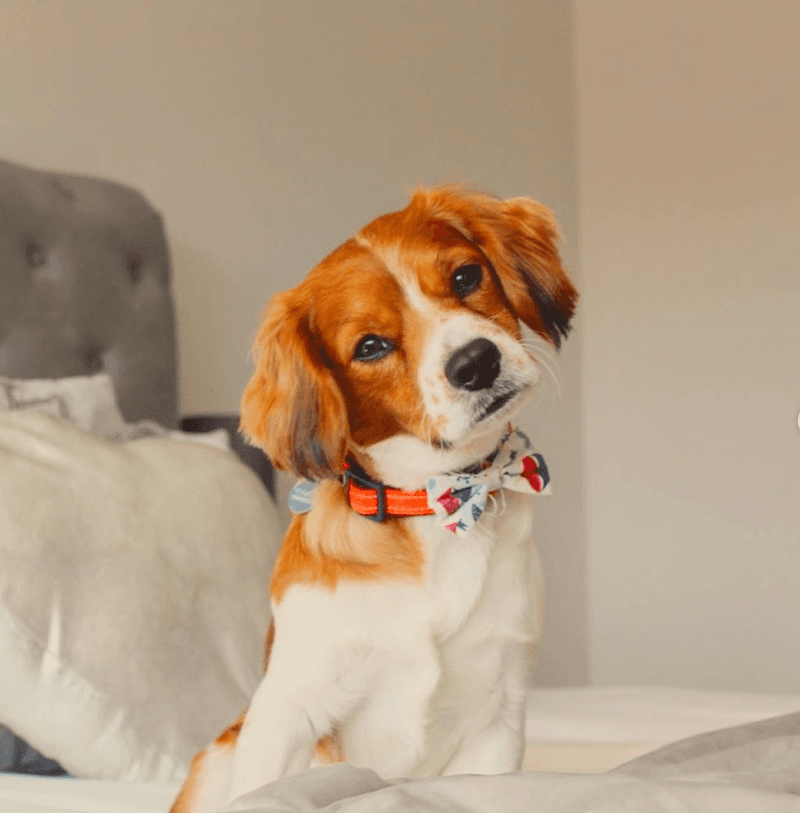
Teaching your puppy to respect boundaries, like staying out of rooms or gardens, is vital for safety and harmony. Use clear cues and positive reinforcement to guide them.
Consistency is key, ensuring all family members enforce the same rules. Gradually introduce boundaries in various settings, rewarding compliance. This lesson prevents accidents and encourages respect for limits, enhancing safety and peace in your home. By teaching your puppy boundaries, you foster a respectful and well-adjusted companion, improving their behavior and your relationship.
Confidence Building
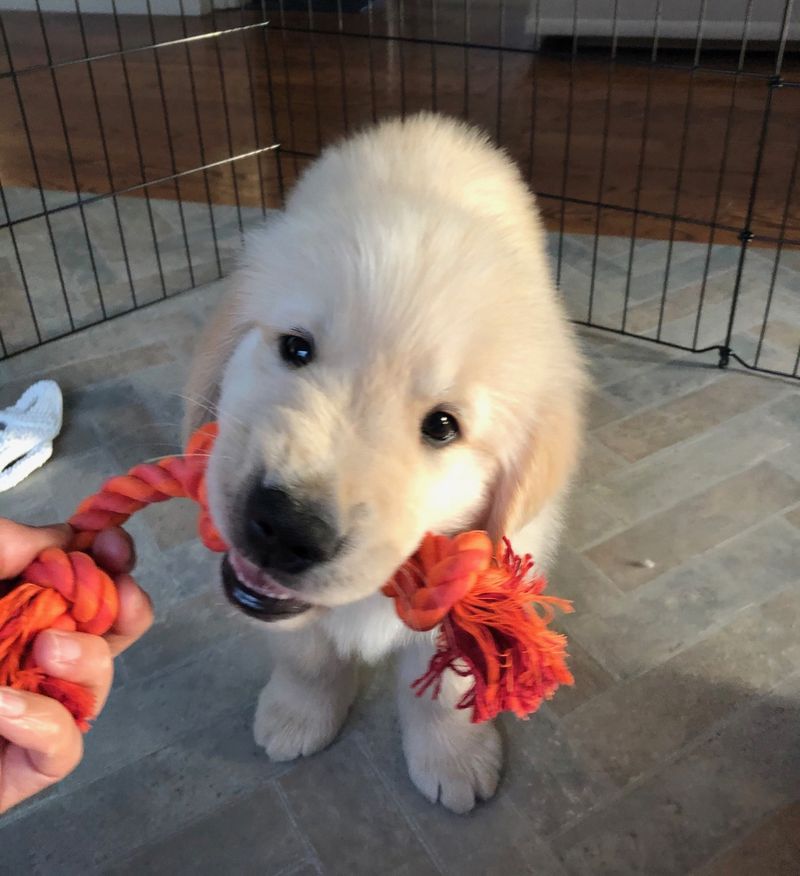
Building confidence in your puppy is crucial for their emotional development. Introduce them to new environments, gradually increasing complexity and difficulty.
Use praise and rewards to encourage exploration and bravery. Exposure to different situations helps them adapt and reduces anxiety. This lesson fosters resilience and a curious, joyful demeanor. By building confidence, your puppy becomes a well-adjusted, happy companion, ready to face the world with you by their side.
Emergency Recall Training
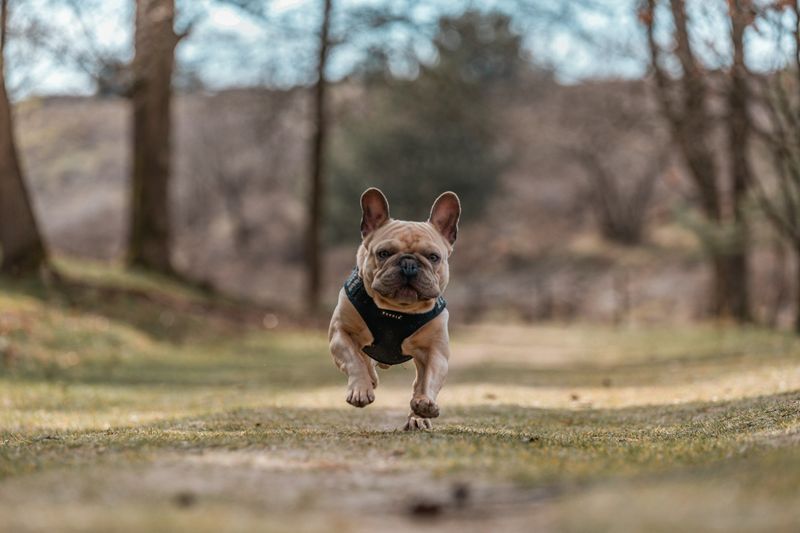
Emergency recall is a lifesaving command. Train your puppy to return immediately using a unique cue, rewarding them generously for successful responses.
Practice in various environments, gradually increasing distractions. Consistency and high-value rewards are crucial for reliability. This command ensures their safety in dangerous situations, providing peace of mind. By mastering emergency recall, your puppy learns to trust your guidance, enhancing both their safety and your bond.

